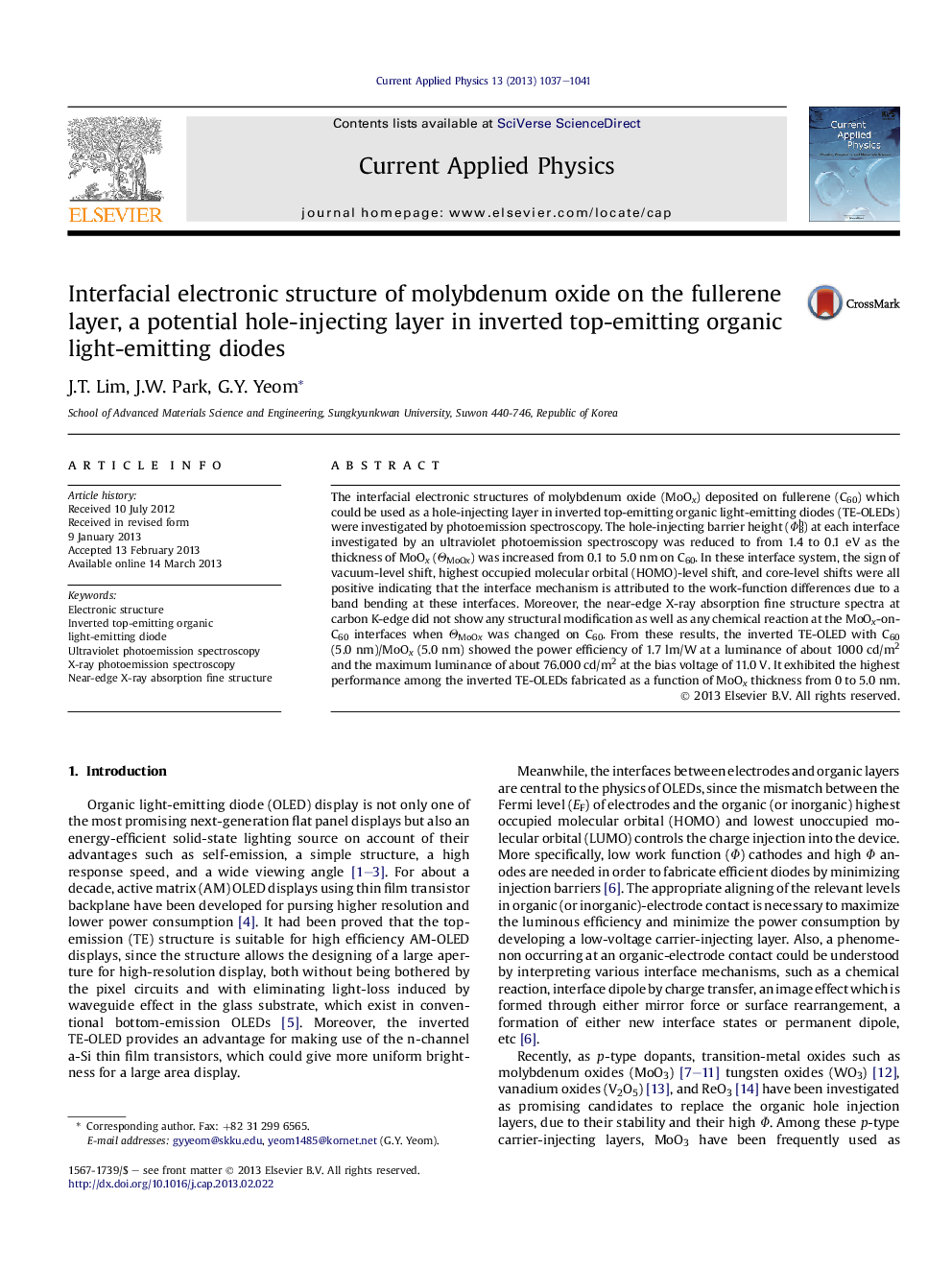| کد مقاله | کد نشریه | سال انتشار | مقاله انگلیسی | نسخه تمام متن |
|---|---|---|---|---|
| 1786390 | 1023415 | 2013 | 5 صفحه PDF | دانلود رایگان |

The interfacial electronic structures of molybdenum oxide (MoOx) deposited on fullerene (C60) which could be used as a hole-injecting layer in inverted top-emitting organic light-emitting diodes (TE-OLEDs) were investigated by photoemission spectroscopy. The hole-injecting barrier height (ΦBh) at each interface investigated by an ultraviolet photoemission spectroscopy was reduced to from 1.4 to 0.1 eV as the thickness of MoOx (ΘMoOx) was increased from 0.1 to 5.0 nm on C60. In these interface system, the sign of vacuum-level shift, highest occupied molecular orbital (HOMO)-level shift, and core-level shifts were all positive indicating that the interface mechanism is attributed to the work-function differences due to a band bending at these interfaces. Moreover, the near-edge X-ray absorption fine structure spectra at carbon K-edge did not show any structural modification as well as any chemical reaction at the MoOx-on-C60 interfaces when ΘMoOx was changed on C60. From these results, the inverted TE-OLED with C60 (5.0 nm)/MoOx (5.0 nm) showed the power efficiency of 1.7 lm/W at a luminance of about 1000 cd/m2 and the maximum luminance of about 76.000 cd/m2 at the bias voltage of 11.0 V. It exhibited the highest performance among the inverted TE-OLEDs fabricated as a function of MoOx thickness from 0 to 5.0 nm.
Journal: Current Applied Physics - Volume 13, Issue 6, August 2013, Pages 1037–1041